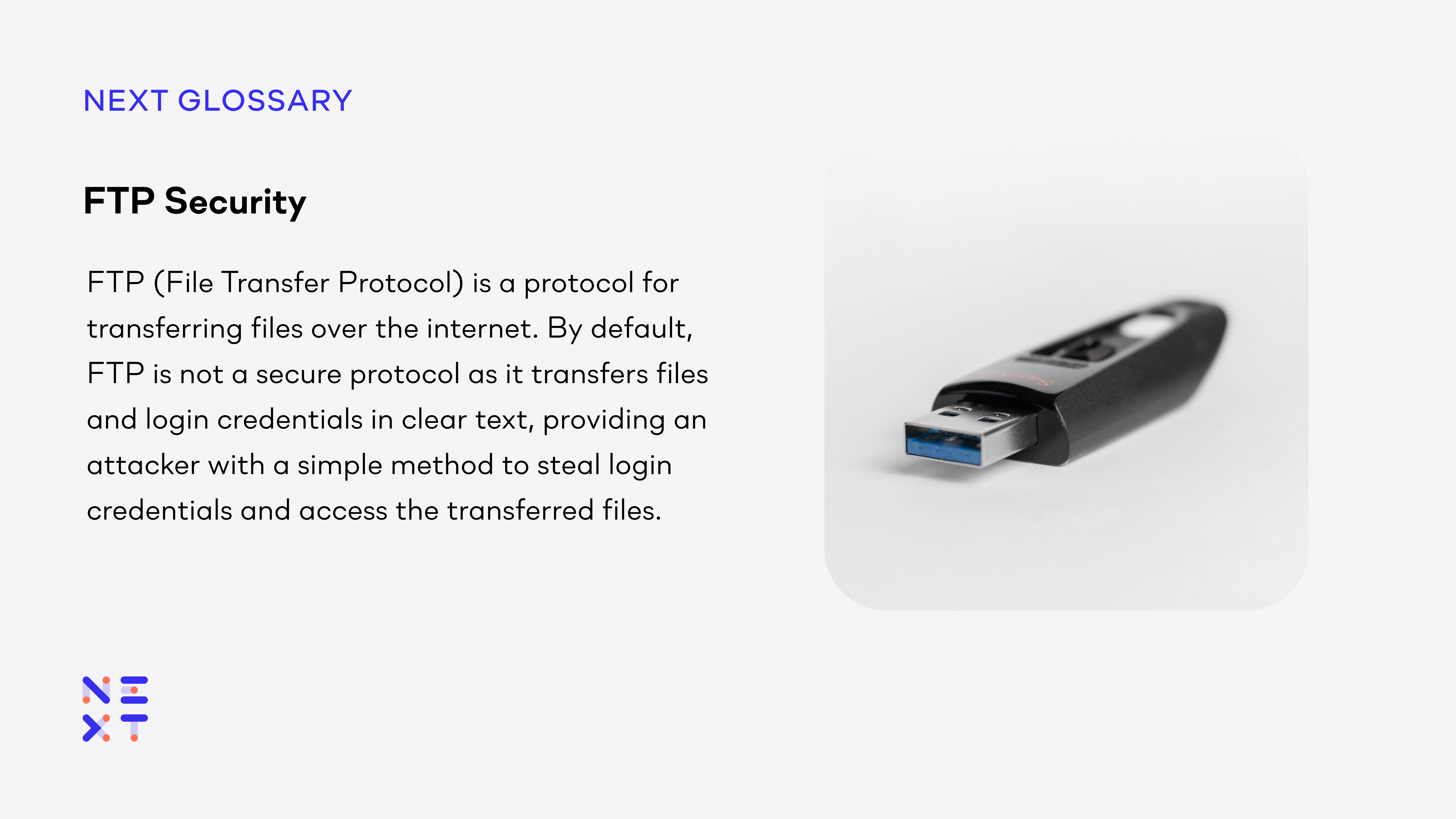Fortinet Acquires Next DLP Strengthens its Top-Tier Unified SASE Solution
Read the release
FTP Security refers to the various measures and protocols that are put in place to secure data transfer operations carried out using the File Transfer Protocol (FTP).

FTP, as a standard network protocol, is used for the transfer of files between a client and a server on a computer network. However, traditional FTP does not encrypt data, which leaves it susceptible to various types of attacks, such as data interception and unauthorized access.
FTP Security, therefore, involves enhancing the security of FTP by implementing various protocols and strategies.
FTP Security is integral to DLP because sensitive data often needs to be transferred between systems. Without secure protocols like SFTP or FTPS, data transferred using the traditional FTP could be intercepted and read by malicious actors, leading to potential data loss or data breaches. Implementing FTP Security measures can help prevent such scenarios by encrypting data in transit and ensuring that only authorized users can access it.
Insider risks refer to potential threats to an organization's data and systems that come from people within the organization, such as employees or third-party contractors who have legitimate access to the organization's network. The use of secure FTP is crucial in managing insider risks because it can limit who has access to sensitive data and provide a record of data transfers. If an insider were to attempt to misuse data, secure FTP protocols would provide an extra layer of security by requiring authentication for data access and transfer. Additionally, they would log these activities, providing a potential audit trail to identify and deal with insider threats.
In summary, FTP Security contributes to DLP and managing insider risk by providing encryption, authentication, and tracking mechanisms to protect sensitive data during transfers, limit access to authorized users, and provide a means of identifying potentially malicious activities.
